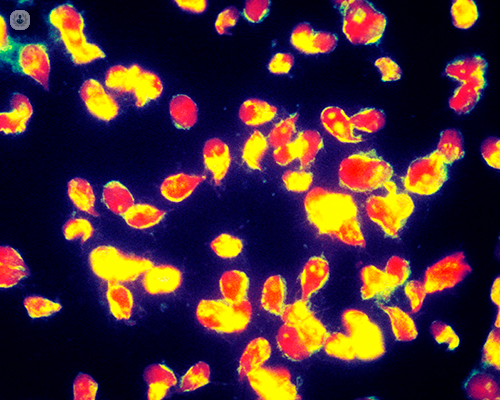Immunofluorescence
What is immunofluorescence?
Immunofluorescence is a microbiological and immunological technique used to identify the presence (or lack thereof) of viral or bacterial antigens and antibodies in a given sample. This can be done by using a specific dye which will make the targeted antibodies appear fluorescent. The sample is then analysed under a confocal or fluorescent microscope.

What is immunofluorescence used for?
This technique can show if there are disease-specific antibodies (in particular, those for systemic rheumatic diseases) in the collected sample, which can be a blood sample or a sample from other tissues.
Immunofluorescence can help with diagnosing the following conditions:
- Mixed connective tissue disease (MCTD)
- Lupus erythematosus
- Sjögren’s syndrome
- Scleroderma
- Polymyositis (PM)
How does immunofluorescence work?
A reactant containing a specific antibody is used. The reactant then fixates itself on the targeted cell. The antibody of the reactant is combined with the fluorescent dye (or marker), thus making the targeted substance or cell visible under UV light. On the other hand, if the targeted substance is not visible, it means that there is no trace of it in the sample.
There are two types of immunofluorescence:
- Direct immunofluorescence: the targeted antibody is chemically linked to a fluorophore.
- Indirect immunofluorescence: another antibody (chemically linked to a fluorophore as well) is used to make the targeted molecule visible.